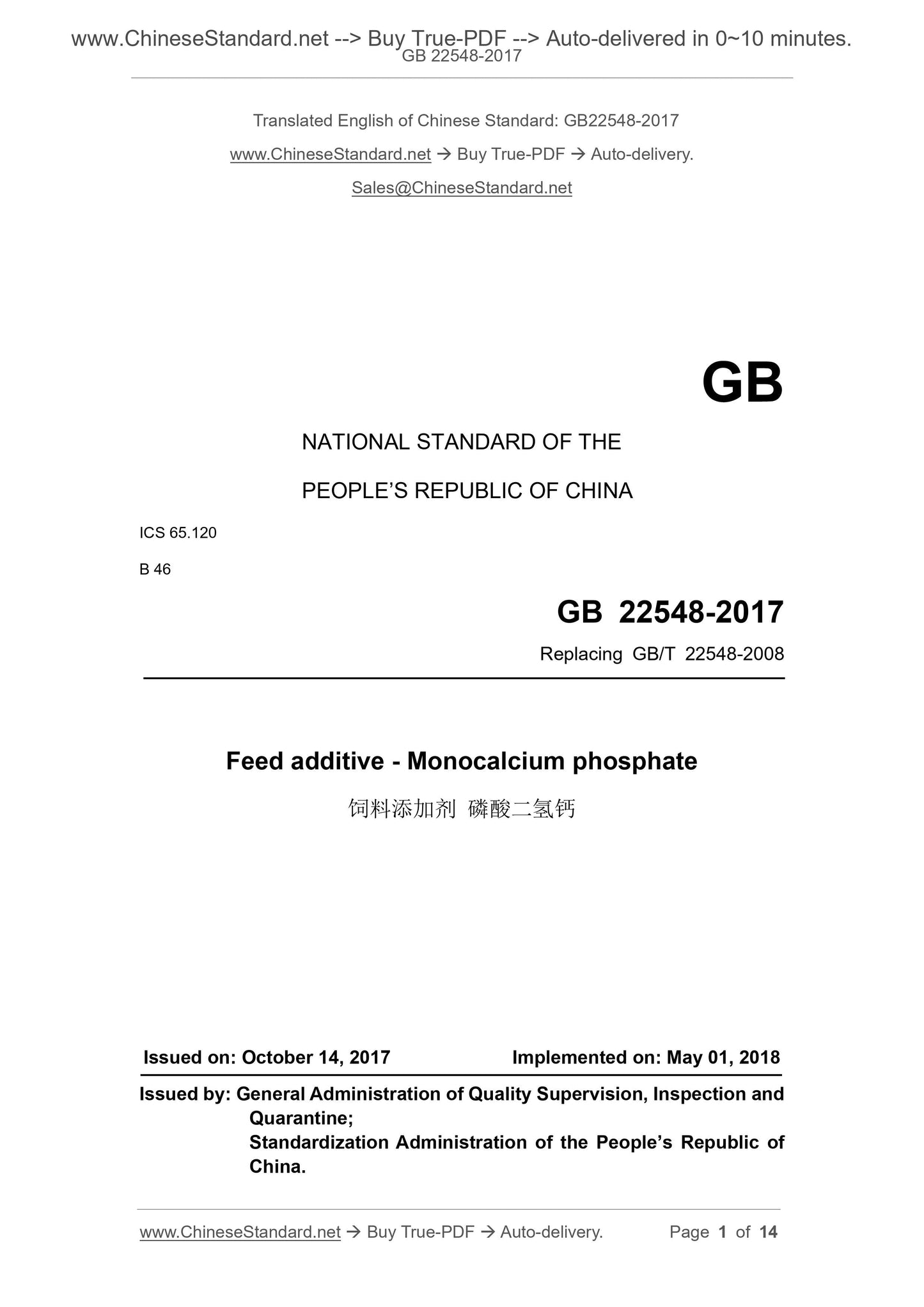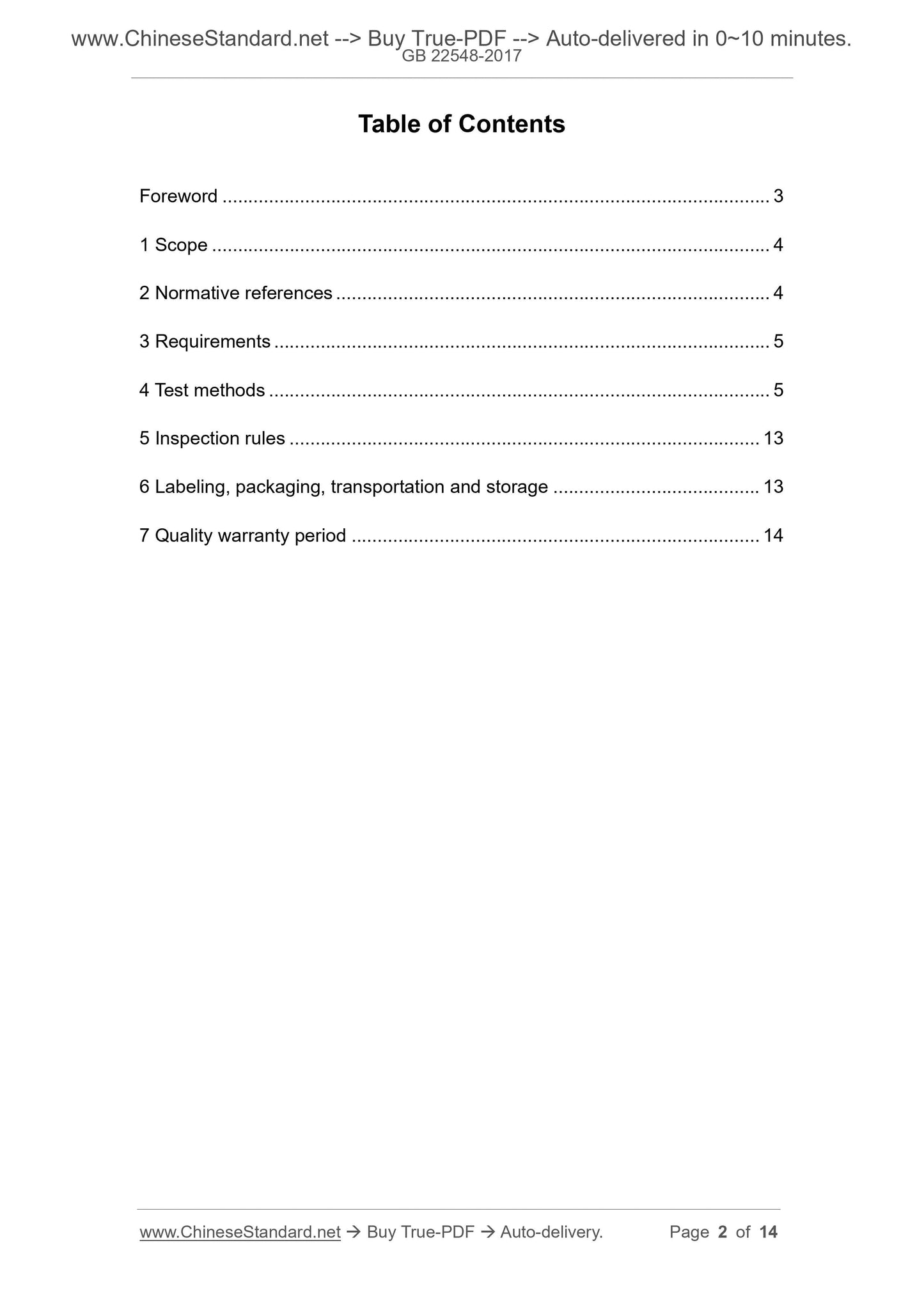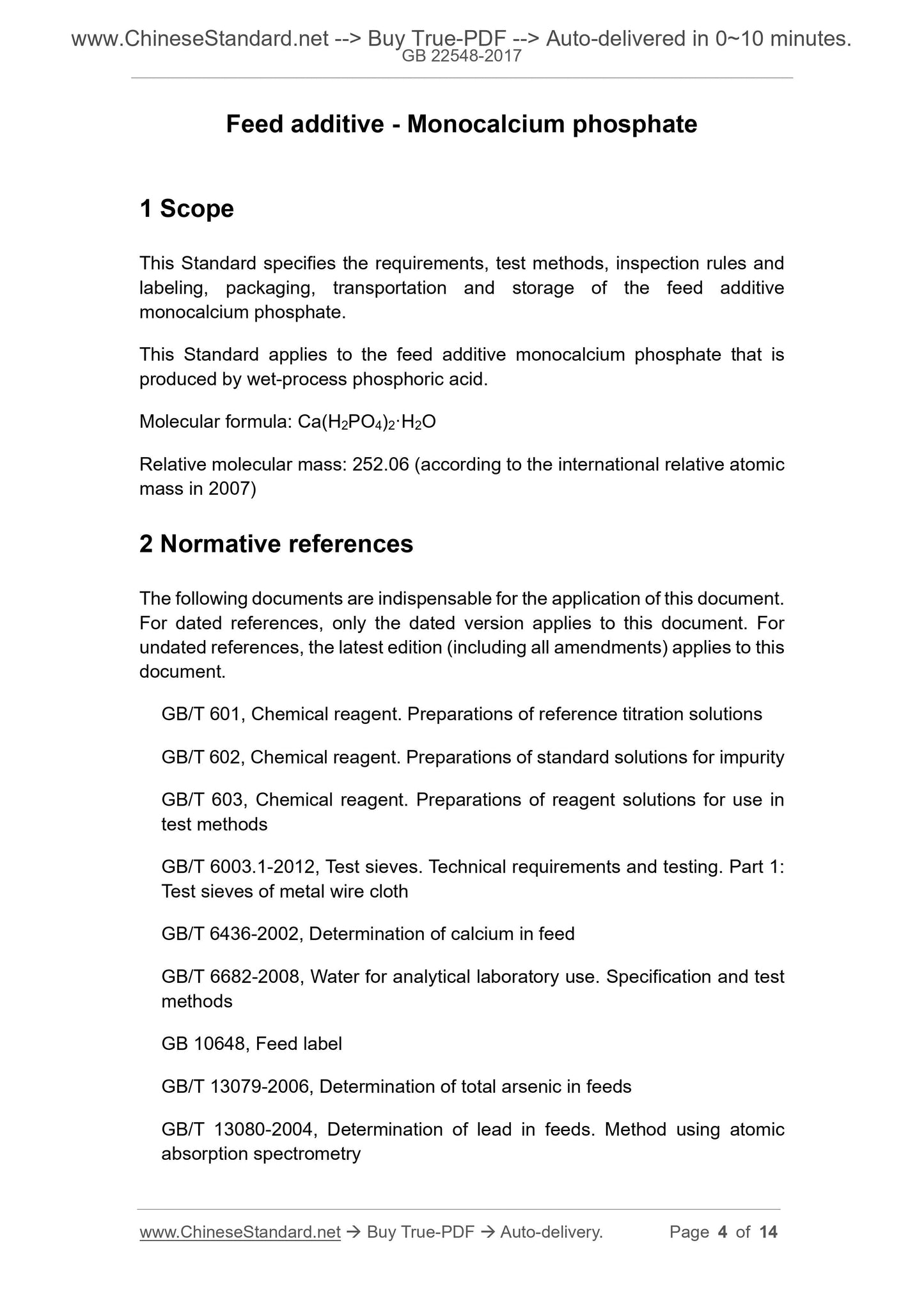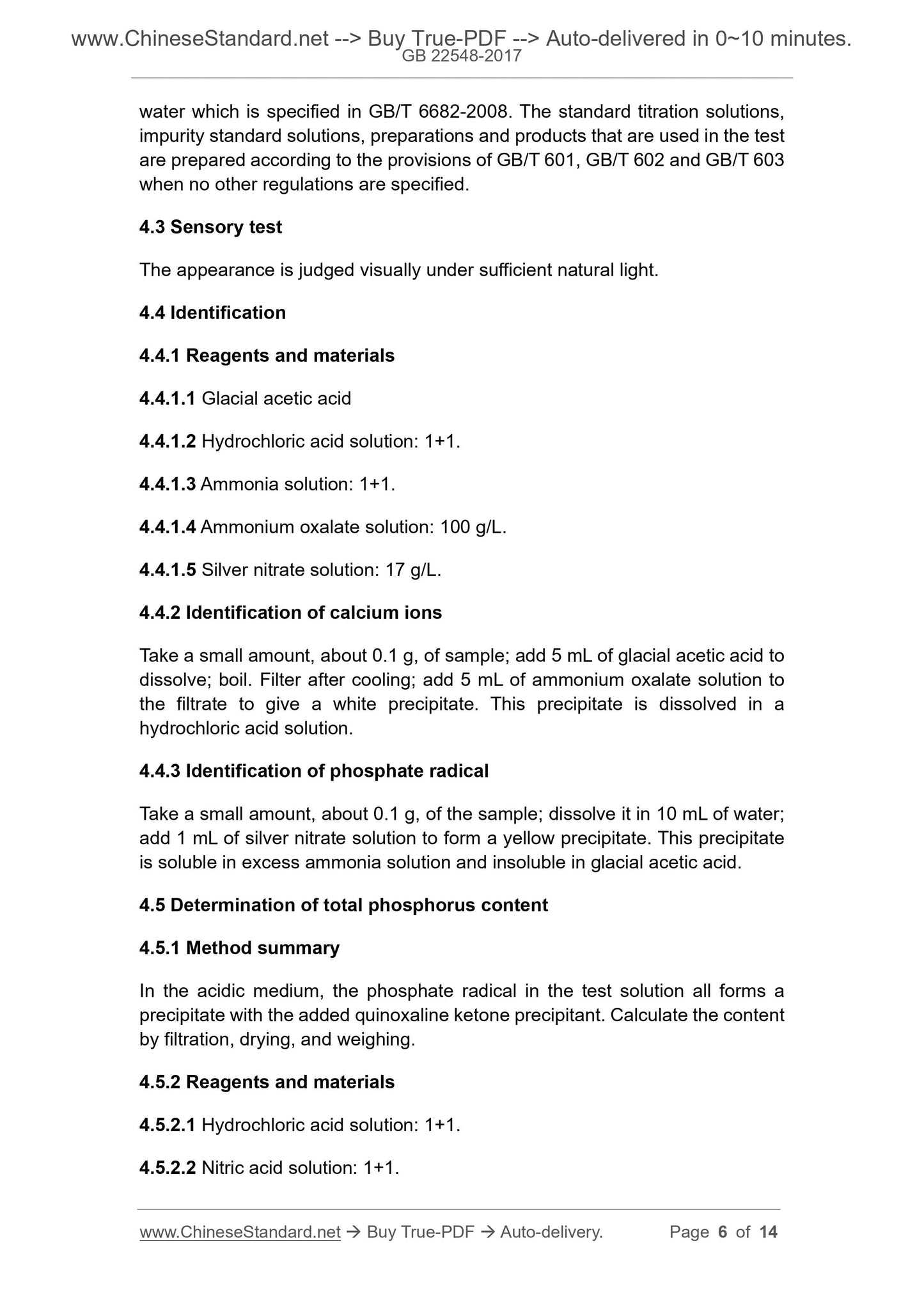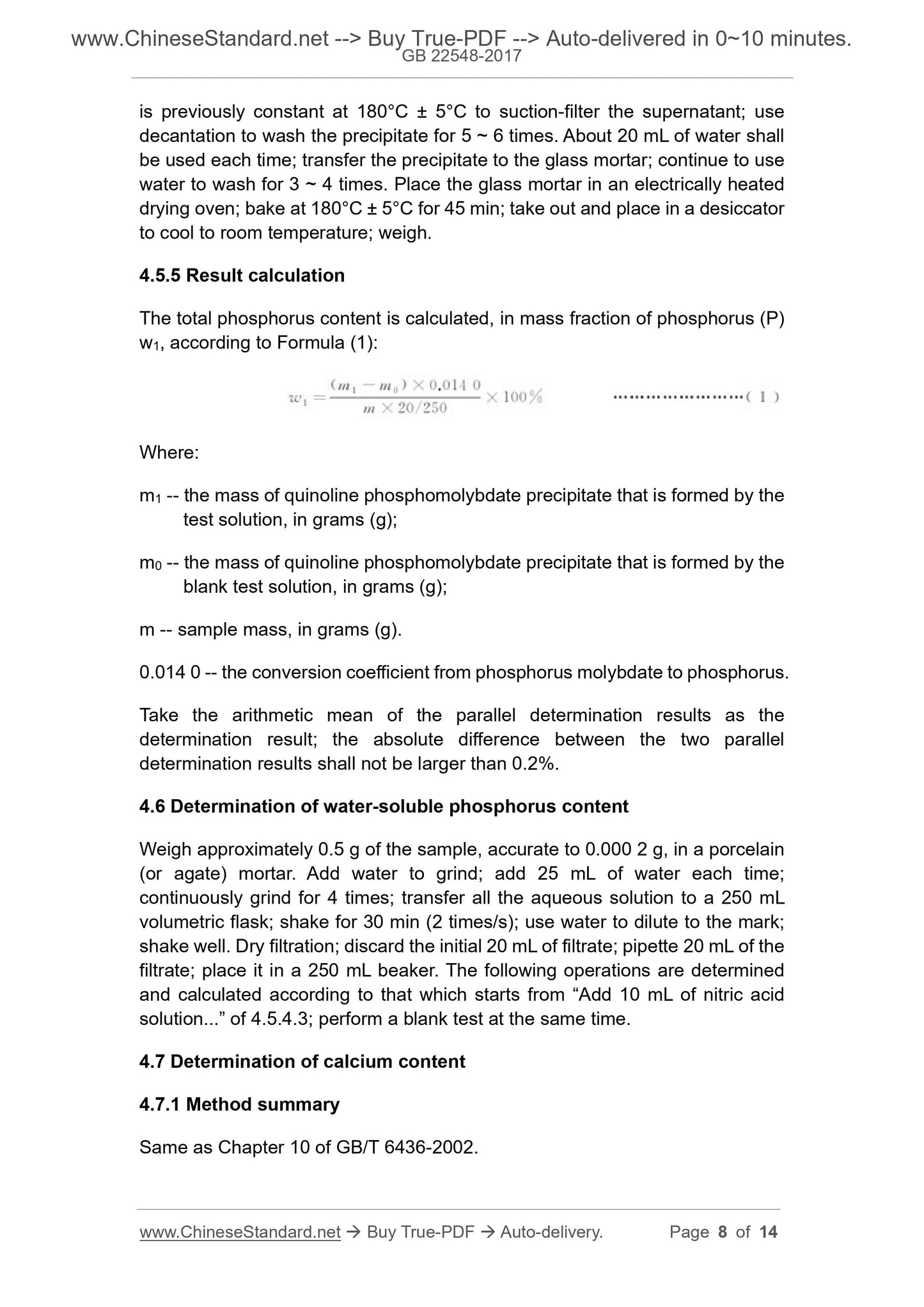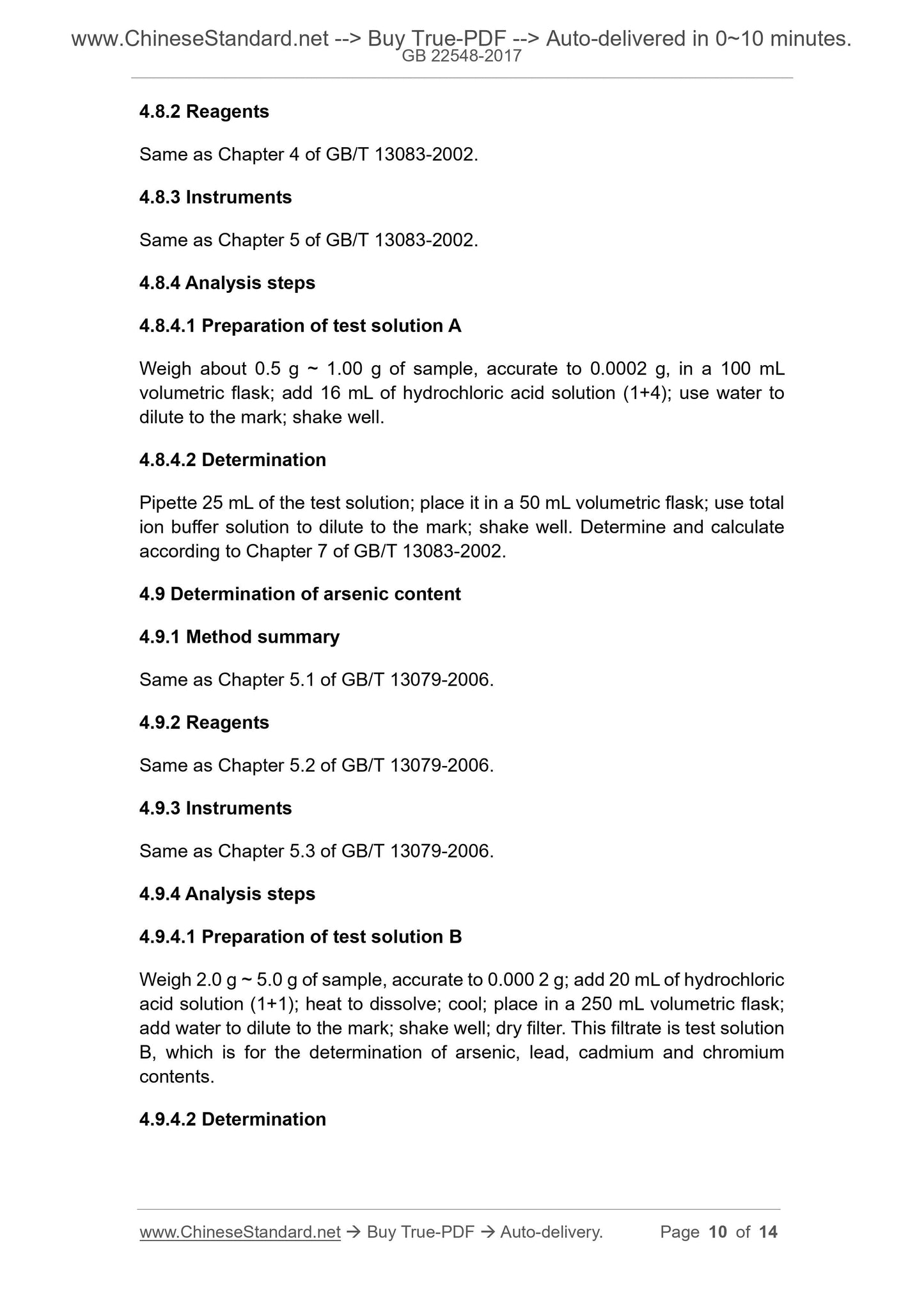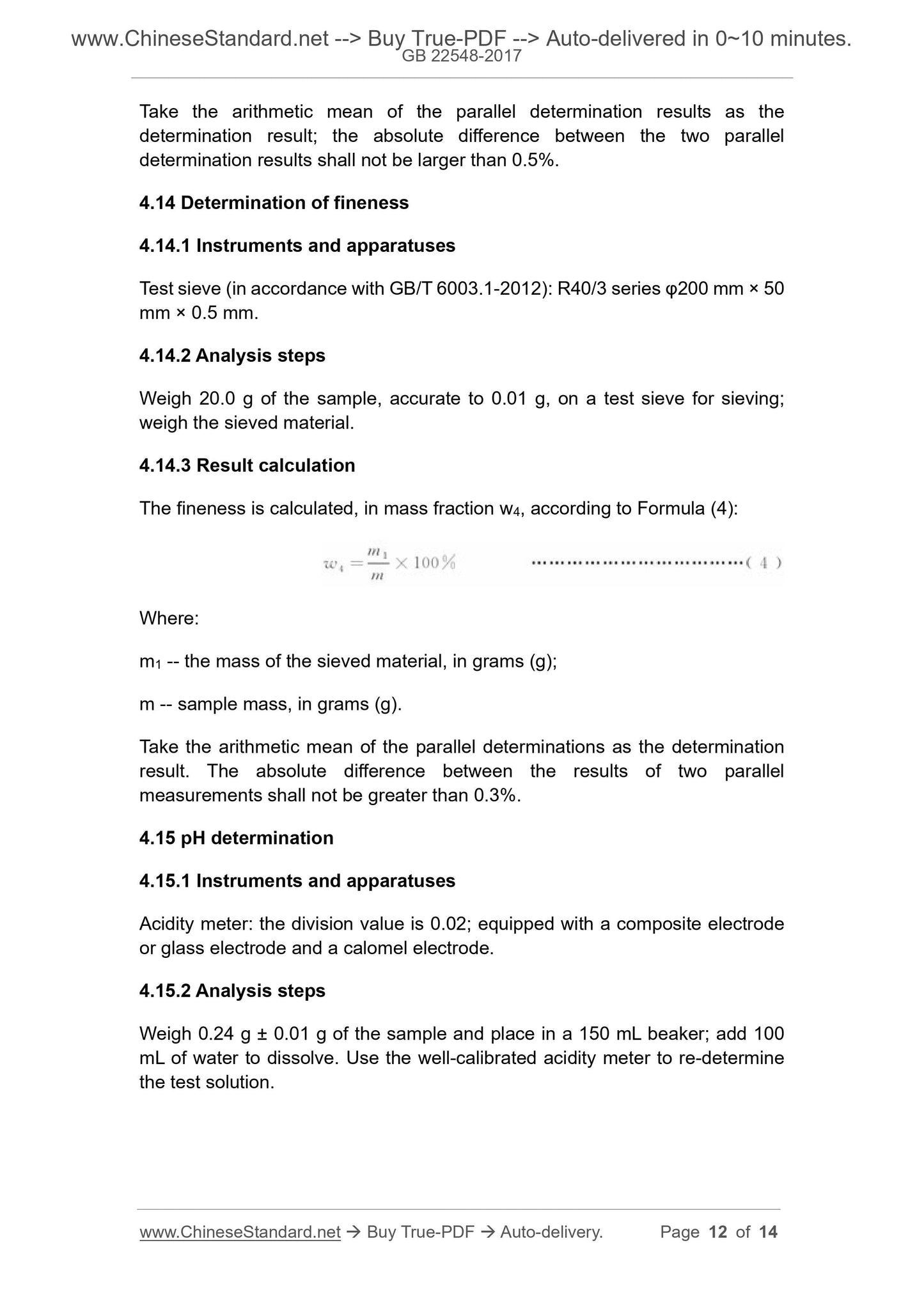1
/
of
7
www.ChineseStandard.us -- Field Test Asia Pte. Ltd.
GB 22548-2017 English PDF
GB 22548-2017 English PDF
Regular price
$150.00
Regular price
Sale price
$150.00
Unit price
/
per
Shipping calculated at checkout.
Couldn't load pickup availability
GB 22548-2017: Feed Additive - Monocalcium phosphate
Delivery: 9 seconds. Download (and Email) true-PDF + Invoice.Get Quotation: Click GB 22548-2017 (Self-service in 1-minute)
Newer / historical versions: GB 22548-2017
Preview True-PDF
Scope
This Standard specifies the requirements, test methods, inspection rules andlabeling, packaging, transportation and storage of the feed additive
monocalcium phosphate.
This Standard applies to the feed additive monocalcium phosphate that is
produced by wet-process phosphoric acid.
Molecular formula: Ca(H2PO4)2·H2O
Relative molecular mass: 252.06 (according to the international relative atomic
mass in 2007)
Basic Data
| Standard ID | GB 22548-2017 (GB22548-2017) |
| Description (Translated English) | Feed Additive - Monocalcium phosphate |
| Sector / Industry | National Standard |
| Classification of Chinese Standard | B46 |
| Classification of International Standard | 65.120 |
| Word Count Estimation | 10,185 |
| Date of Issue | 2017-10-14 |
| Date of Implementation | 2018-05-01 |
| Issuing agency(ies) | General Administration of Quality Supervision, Inspection and Quarantine of the People's Republic of China, Standardization Administration of the People's Republic of China |
Share
